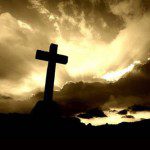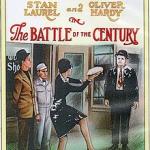Editors' Note: This article is part of the Patheos Public Square on the Future of Faith in America: Judaism. Read other perspectives here.
The next years are going to see American Jews split down the middle, with two groups rushing headlong in opposite directions.
Jews have had time to mull over their own post-Pew jitters, responding to a similar report two years ago on the state of American Judaism. It showed an extremely high rate of intermarriage, deferral of marriage and small family size among those who married within the group, and the existence of a new form of crypto-Jew: millions who had ceased even calling themselves Jewish. One bright spot was the Orthodox community, which was flourishing beyond expectation. While still the smallest group overall, data show that among Jews ages 20-35, they are already the numerically largest religious subgroup within American Judaism. They don't intermarry; they have large families; they show an extremely high rate of intergenerational retention. Moreover, the differences between the Orthodox and non-Orthodox in almost all important areas (political affiliation, attitudes about the importance of belief and of practical observance, positions on contemporary moral issues, where and how they live), are so pronounced that there are at least two American Jewish communities to speak of: the non-Orthodox and the Orthodox.
It is about the latter group that I shall write.
The single, most important element in the Orthodox future is firm commitment to what worked in the past — adherence to Jewish law. Despite the earlier prognostications of the other Jewish denominations who had bet that Orthodoxy would be incompatible with American modernity and would disappear in time — and despite the skittishness of early Christianity toward Law as a central focus of religious devotion — observance of halacha/ Jewish law works better than anything else to keep Jews Jewish. As Rabbi Jack Wertheimer, professor of American Jewish history at the (Conservative) Jewish Theological Seminary observed, the welcome mat placed prominently by the non-Orthodox denominations failed to work as hoped. Those denominations made it easy to enter, and demanded little or nothing to stay in. It led to an unsatisfying religious experience. It is a sobering realization that might be worthwhile of consideration by our Christian friends.
Orthodox Jewry will continue, please G-d, to grow by leaps and bounds. Orthodox Jews will however, continue to wrestle with the chief challenge of the last two centuries: living in an open, modern society. Within the Orthodox world, two chief approaches have developed to the challenge of living in the midst of a society with values and culture very much in conflict with traditional morality. The Modern Orthodox community opted for inoculation, or exposing young people to measured amounts of the challenge and trying to provide tools for dealing with more of it as adults. The more traditional Orthodox community (including most Hasidic groups) stressed isolation. While both groups have thrived and grown, critics within argue that neither has come up with a perfect balance, but have each become more extreme. The Modern Orthodox have become, at times, far too given to openness; the traditionalists often seem intent on pursuing greater and greater restriction in a world in which no walls can keep out alien influences. At the moment, both subgroups seem intent on continuing on the same trajectory. It remains to be seen whether a third group will form in between, or whether the groups will be able to do a mid-course correction and moderate themselves.
We can confidently predict that in at least two areas, we will see some change in the next five years.
The change in the role of women in general society puts pressure on the Orthodox to find new roles and opportunities for women. The Modern Orthodox have been doing this for quite a while. It is likely, however, that with a growing population of women better educated in both Jewish and professional areas, we will see more prominent voices and opportunities for women in public Jewish life even in the more traditionalist sub-group.
Some will go to greater extremes than others. The decline of the Conservative movement has left room for those who want to see more egalitarianism, autonomy, and openness than they see in Modern Orthodoxy at the moment. A new group called Open Orthodoxy has arisen to fill the vacuum. One of the issues that will certainly be decided within the next few years is whether there is a place for them under the Big Tent of Orthodoxy. The traditional community has more or less written them out of Orthodoxy, and will not accept their conversions or other legal rulings. The Modern Orthodox are debating the issue. Whether a new denomination forms between Reform and Orthodoxy is one of the developments to look for in coming years.





